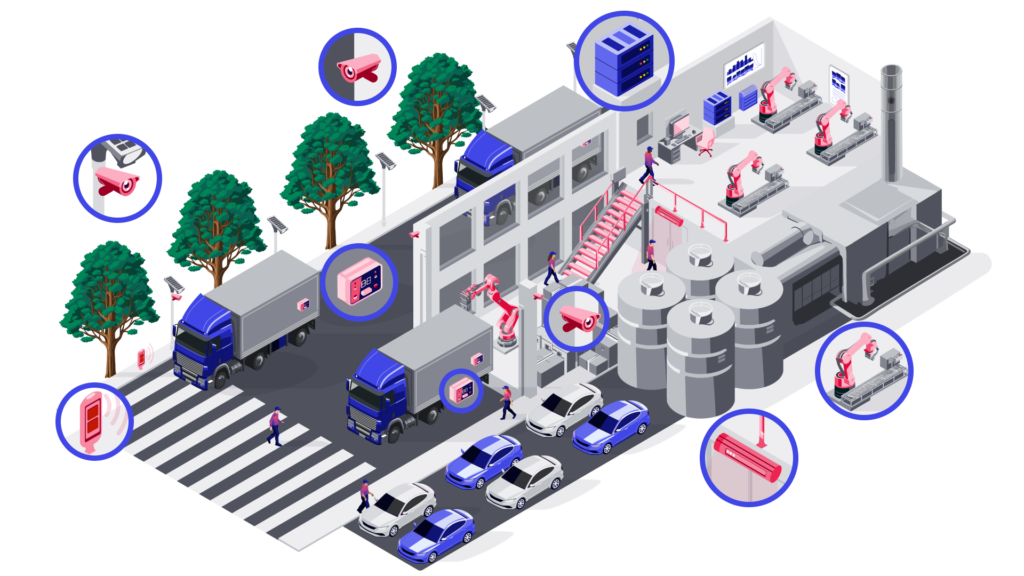Edge Application Management in 5G & Telco
Empowering 5G network service providers with edge application management
Why Edge Computing in Telecom?
The rollout of 5G brings demanding new requirements—ultra-low latency, massive device density, and bandwidth-heavy applications like AR/VR, autonomous systems, and smart city infrastructure. But centralized cloud architectures can’t keep up. Sending all data to distant data centers introduces latency, creates network congestion, and limits the true potential of 5G.
To unlock the full promise of 5G, telecom operators need to bring compute closer to where data is generated—at the network edge. That’s where the Avassa Edge Platform comes in.
Avassa complements existing 5G core orchestration solutions by providing a purpose-built container orchestrator for the edge. Our platform supports MEC (Multi-access Edge Computing) workloads and vDU container management through full lifecycle automation: define, deploy, monitor, and upgrade. This drastically reduces the operational overhead of managing distributed edge sites.
Additionally, Avassa enables business-critical use cases in private 5G environments, including self-service portals that allow end-customers to deploy and manage containerized applications on their dedicated edge infrastructure—securely, quickly, and at scale.
Automated Telco Edge Deployments for Far-Edge Infrastructure
Deploying and managing far-edge infrastructure at scale is one of telecom’s biggest operational challenges. With the growing need for localized processing, low-latency service delivery, and reliable connectivity, telecom operators require a telco edge computing solution that simplifies and automates edge site operations. Avassa delivers exactly that—empowering telcos to automate deployments, streamline updates, and maintain robust telco edge infrastructure from a central control point.
Key capabilities include:
- Remote management, installations, and onboarding of new sites – Seamlessly provision and manage telco edge infrastructure across geographically distributed locations. Avassa enables fully remote onboarding, reducing the need for on-site technicians and ensuring consistent telco edge computing operations, even in the most remote areas.
- Declarative deployments and upgrades of containerized applications and CNFs – Define and manage applications centrally, then deploy them declaratively across the telco edge. Avassa automates the rollout and updates of containerized workloads and cloud-native network functions (CNFs), delivering consistent performance in edge computing in telecom environments.
- Small footprint purpose-built for far-edge installations – The Avassa Edge Platform is designed with telco edge infrastructure in mind—lightweight, efficient, and optimized for space- and power-constrained far-edge environments. It brings full orchestration capabilities to sites where traditional platforms can’t operate.


Key Advantages of Implementing Telco Edge Computing
To meet the scale, complexity, and dynamic demands of modern telecom networks, telco operators need a platform that is built for distributed, real-world deployments. Avassa provides telco edge computing capabilities tailored for managing workloads across far-edge environments, offering visibility, security, and flexibility at every stage.
Key advantages of the Avassa Edge Platform include:
- Comprehensive overview and control of which applications run where – Avassa provides centralized visibility into your telco edge infrastructure, so you always know which containerized applications or CNFs are running at which site. This simplifies operations across large-scale telco edge cloud environments.
- Distributed security ensures a robust security posture in the event of physical theft – With telco edge sites often deployed in less secure, remote locations lacking perimeter security, Avassa implements distributed security measures that protect data and applications—even if hardware is physically compromised.
- Edge-native monitoring and observability – Gain real-time insight into all your telco edge computing environments. Avassa’s edge-native observability tools offer detailed metrics, logs, and health data—enabling proactive operations and faster incident response.
- Multi-tenancy enabling new business models for enterprise services – Support multiple customers or departments on shared telco edge infrastructure with strong isolation and governance. Avassa’s multi-tenancy model helps operators unlock new enterprise use cases while maintaining control and compliance.
Edge Computing Use Cases in Telecom
- Network Function Virtualization (NFV) Management: Avassa can be utilized to deploy and manage virtualized network functions (VNFs) at various edge locations. This allows telcos to dynamically adjust network services based on local demand, improving bandwidth utilization, and reducing latency for end-users.
- Real-Time Data Analytics and Traffic Management: The platform can support applications that analyze network traffic in real-time, enabling telcos to manage network congestion, optimize routing, and ensure high-quality service delivery across multiple locations.
- IoT Device Management and Data Processing: Avassa is well-suited to manage applications that handle large volumes of data from IoT devices. By processing this data locally at edge sites, telcos can reduce latency, enhance data security, and provide faster, more efficient services to IoT users.
- Customer Experience and Personalization Services: The platform can be used to deploy applications that provide personalized services to customers based on their usage patterns and preferences. Local processing allows for real-time personalization, enhancing customer satisfaction and engagement.
- Security and Fraud Detection: Avassa can manage applications that monitor network traffic for security threats and potential fraud. By analyzing data locally, telcos can quickly identify and respond to security incidents, minimizing their impact and protecting customer data.

Success Stories: Telco Edge Computing in Action
Frequently Asked Questions

Reach out
Interested in learning more about our technology?
Send us a message and we’ll let you know how we can help.